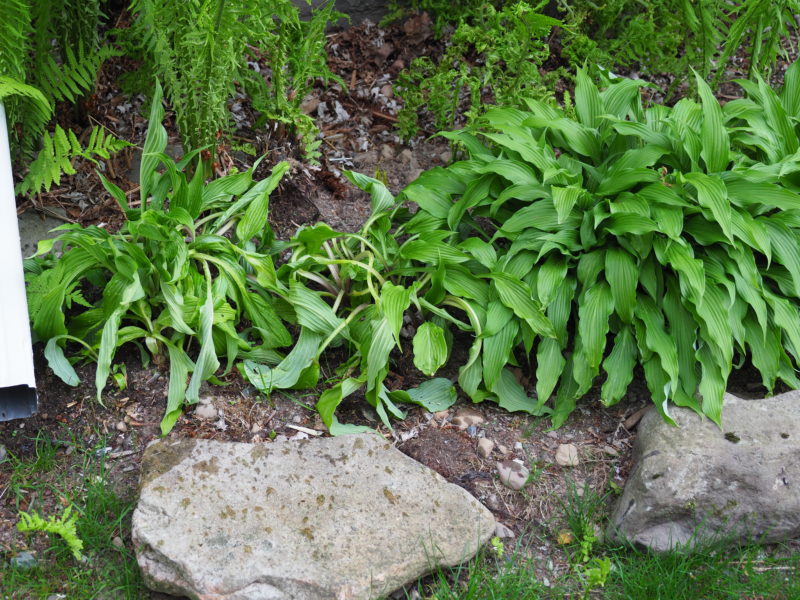

It was a sunny, delightfully warm spring day. I’d gotten the bulk of my garden work done before it got too warm, and I sat on the side of my lawn in a cheap sling chair looking at the gardens and lawn. The warmth of the sun nearly put me to sleep, but I kept on seeing these cotton puffs fly by. Of course these were the airborne seeds of dandelions set loose by mature flowers down the street or from miles and miles away. They all seemed to be headed for my lawn.
Each time I saw one of these seed parachutes land on the grass I knew that very spot was a potential home for a new dandelion, and there were literally thousands of them passing by every day for weeks. It could make a person very depressed. Work your rear off to have a nice lawn, and some idiot down the street who hasn’t mowed for weeks is sending these gifts of weed seeds downwind.
I know some homeowners who would have freaked out at the site of all these weed seeds dropping from the sky. Worse yet, if they were sitting where I was they’d see a lush, green and apparently weed-free lawn, but I knew otherwise. I can easily point out a dozen or more weeds that live in my lawn. Some are arch enemies that I always battle. Some are weeds by your definition but not by mine. Others just show up and get managed.
Years ago after we bought our house I thought it would be appropriate to make the lawns and gardens as organically grown and managed as possible. This meant weaning myself off Roundup and Weed B Gon and no pre-emergent crabgrass herbicides and no broadleaf herbicides. It’s now 17 years later. I only use an organic lawn fertilizer. I’ve never treated the entire lawn or gardens for weeds.
On the other hand, I’ve worked and consulted for people in the Hamptons who see a weed in their lawn and go bonkers. They live within feet of the bays and ocean, and yet they have little to no environmental sensitivity or awareness of what their fertilizers, herbicides, insecticides and disease controls do to our local waters. They simply don’t care. They have their house staff buy only the best organic produce, though.
But I digress and need to get back to your lawn and your weeds. I’m not rigid in my thinking and reading. I think there are times when the use of chemicals on a lawn might be necessary, but they are few and far between unless you insist on not a single weed. It all depends on where your mindset is and how much work you, yes you, want to do or have done for you.
I think there are times when you just have to start all over. You may have bought a house where the lawns were neglected for years and years. You just bought a great house on a miserable weed patch. In this case, start all over. If you’ve been living in the same place for years and you never had a nice lawn but want one, start over. It will be expensive, but only once. And, you need to pay attention to who does the renovation and what they use as a seed mix.
There is a lawn mantra that says keep the turf tight and healthy, and weeds will rarely take hold. Yes, there will be an occasional breakout of crabgrass, but that can easily be controlled if it gets pulled or treated before it sets seed. Let it go to seed and you have an iron-clad guarantee for a larger and repeat performance next year. Buy yourself a weed digger with a long handle and early in the spring walk around the lawn as often as you can and dig the dandelions. Once out of the ground they can’t set seed and reinfest your lawn — and mine. But dig it, don’t spray it.
Some landscapers sell you a lawn package, and as long as you pay the monthly bill you’ll have a great lawn and no weeds. Well, if you start off with a great lawn why do you have to put a pre-emergent down every year? Didn’t they kill all the crabgrass last year and the year before and the year before? Do they need to spray a post-emergent broadleaf herbicide once or twice a year? Didn’t they do that last year and the year before and the year before? Aren’t all the weeds dead yet?
Yes, weeds can show up seemingly out of the blue as animals, wind, mowers and even foot traffic spread the seeds. But this rarely results in an entire lawn being taken over by the weeds. Simple “spot” treatments can nearly always take care of these small infestations and in some cases the treatment can be organic. But like I said, I’m not rigid about this and I have no issue with careful applications of herbicides for spot control.
Even with limited use, you should be aware of some of the dangers of herbicides used in your lawn and garden. Some — when improperly applied on hot, dry days — volatilize and can kill nearby “nontarget” plants. If granular herbicides are used by a poorly calibrated spreader or sloppy operator, some material may get into your planting beds. This often results in “unexplained” damage to perennials and some trees.
Then, there is the question of weed tolerance. My lawn has two plants growing in it that many of you probably think of as weeds. One is the wild violet. It dots the lawn with white and blue flowers that can show up between mowings. Wild violets are not easy to control but they’re not unsightly — just a break in the homogeneous grasses. The other “weed” is white clover. It’s only a weed because you think it is. White clover is actually great for your lawn because it’s a legume that leaves nitrogen in the soil thus feeding the grass plants. Sometimes you may get large patches that need to be “managed.” Well, it’s easily tamed or reduced with an organic herbicide like BurnOut that won’t kill the perennial grasses.
There are options, but you need to work with a lawn care company that’s sensitive to your needs and will work with you on a plan. And yes, there are a number of companies out here that do complete organic lawn care. No, it shouldn’t cost a fortune more. But, hey, it’s the Hamptons.
Every time I write a rant like this on lawns and herbicides I get emails from readers asking for recommendations for landscapers and lawn care providers who do sensible, thoughtful lawn care with a minimum of chemical inputs. If you or your firm does this kind of lawn care, send me an email. Give me an overview of your business, and maybe we can talk. Homeowners are eager to look into this kind of service but have trouble finding you. Have a wonderful weekend and keep growing.
As it gets warmer expect to see more and more insects in your garden and on your plants. Early control means much fewer of these pests later in the season. When spraying them, even with organics, never spray in the heat of the day in full sun.
Missing your cicadas? Not only are there very few out here but even in areas where they’ve been expected the cool weather has kept them at bay. There’s also a fungus that’s controlling them and reducing their numbers. Check out this article in the Washington Post: wapo.st/3f84d2t.
The long-range weather forecasts for June have changed yet again. The overall temperatures were supposed to be on the “normal” side but now there’s a revision calling for above normal heat. No change on the precipitation outlook though, and that’s still looking to be above normal.
Don’t forget to feed your veggies. Long-season crops like melons, tomatoes, peppers and others may need feeding monthly or more depending on what type of fertilizer you use. Keep in mind that organics, especially granular organics, are naturally released slowly. But they still need replenishment, and the best method is usually by side dressing.
Keep your tomato foliage dry. Never water them from above and try not to allow water to splash around them. It’s the best way to move around the spores that can cause tomato diseases. Stake or cage them when planting and continue to help them stay off the ground.
Deadhead peonies by removing the spent flowers so they don’t try to set seed. Don’t prune the foliage.
If there are a few cloudy days in a row that will be a good time to divide early-flowering perennials like the Primulas. Divide with a sharp knife and replant immediately, watering the transplants daily for a week or so.
Collect seeds from columbines as the green seed capsules turn brown. Seed can be sprinkled on top of newly worked soil. Just press the seed to the soil without covering. Water regularly and fresh seed should germinate in about two weeks. Ripe seed is black, small and hard.
 More Posts from Andrew Messinger
More Posts from Andrew Messinger